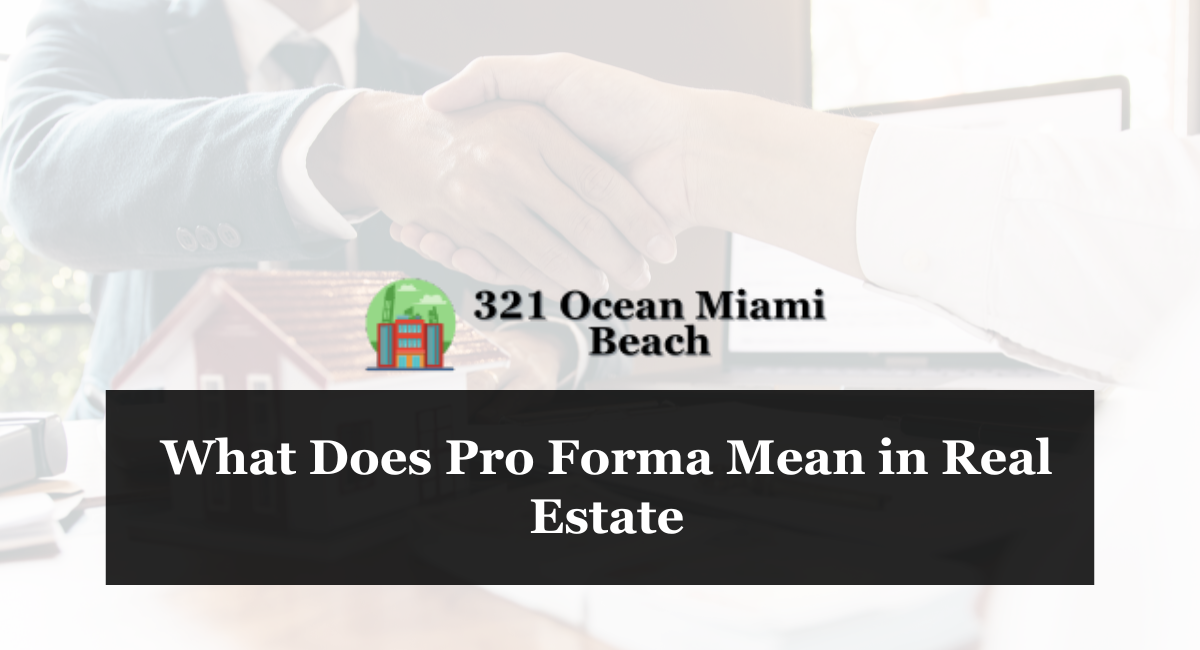For aspiring or seasoned real estate investors, navigating the complexities of the market can feel overwhelming.
Understanding essential terms like “pro forma” is crucial for making informed decisions and maximizing potential returns.
This article delves into the world of pro forma in real estate, exploring its meaning, purpose, and its significance for investors seeking success in the property market.
What is a Pro Forma in Real Estate?
In simpler terms, a pro forma, derived from the Latin phrase “pro forma,” meaning “for the sake of form,” is a financial projection specifically designed for real estate investments.
It outlines the anticipated future financial performance of a property, incorporating factors like:
- Projected income:
This includes potential rental income, additional income sources like parking fees or laundry facilities, and any anticipated rent increases during the ownership period.
- Estimated expenses:
This encompasses various operating costs associated with the property, such as property taxes, maintenance costs, insurance premiums, and vacancy rates.
- Debt service:
If financing is involved, the pro forma factors in the projected mortgage payments, including principal and interest.
The Purpose of a Pro Forma:
The primary purpose of a pro forma in real estate is to provide investors with a clear and concise picture of a property’s potential financial performance. This forecast allows investors to:
- Evaluate the feasibility of an investment:
By estimating the projected income and expenses, investors can assess if a property aligns with their financial goals and expected return on investment (ROI).
- Compare investment options:
Pro forma allows investors to compare the projected financial performance of different properties side-by-side, enabling them to make informed choices based on their risk tolerance and investment objectives.
- Identify potential risks and opportunities:
Analyzing the projected income and expenses can help investors identify potential risks like unexpected vacancy periods or high maintenance costs.
This allows them to develop strategies to mitigate these risks or capitalize on potential opportunities.
Who Creates a Pro Forma?
Pro formas can be created by:
- Investors:
Experienced investors often have the knowledge and tools to generate their own pro formas using financial spreadsheets and industry benchmarks.
- Real estate agents:
Many real estate agents assist potential buyers by creating basic pro formas for the properties they are representing.
- Financial professionals:
Investors can engage financial advisors or real estate consultants who specialize in creating detailed and accurate pro formas for a fee.
Beyond the Basics: Key Components of a Pro Forma
While the specific structure can vary, a comprehensive pro forma typically includes the following elements:
- Property information:
This section details the property’s location, type (residential, commercial, etc.), age, square footage, and any unique features.
- Assumptions:
This section outlines the essential assumptions used in the projections, such as average rental rates, vacancy rates, and inflation rates. It’s crucial to note that these assumptions directly impact the overall accuracy of the pro forma.
- Income statement:
This section projects the property’s future income, including gross rental income, other income sources, and deductions for vacancy and bad debt.
- Expense statement:
This section outlines the anticipated operating expenses, including property taxes, insurance, utilities, repairs and maintenance, and property management fees.
- Cash flow statement:
This section summarizes the projected cash flow, essentially depicting the difference between the property’s income and expenses. It reveals the property’s ability to generate positive cash flow and cover debt obligations.
Limitations of a Pro Forma:
It’s crucial to understand that a pro forma is a forecast, not a guarantee of future performance. The accuracy of the pro forma heavily relies on the quality of the assumptions used and the expertise of the individual creating it.
Here are some key limitations to consider:
- Market volatility:
Unforeseen market changes, such as economic downturns or shifts in rental demand, can significantly impact the projected income and expenses, rendering the pro forma inaccurate.
- Unforeseen events:
Unexpected events like natural disasters, major repairs, or changes in regulations can create additional costs not included in the initial pro forma.
- Accuracy of assumptions:
The entire projection relies on the accuracy of the assumptions used. Even minor discrepancies in assumptions can significantly alter the projected financial performance.
Conclusion: A Valuable Tool for Informed Decision-Making
While not devoid of limitations, a pro forma serves as a valuable tool for real estate investors navigating the world of property investment.
By understanding its purpose, components, and limitations, investors can leverage pro formas to:
- Make informed and strategic investment decisions.
- Compare and evaluate various investment options.
- Identify potential risks and opportunities associated with a property.
Remember, a well-crafted pro forma is just one piece of the puzzle.
Combining it with thorough market research, seeking professional advice when needed, and remaining flexible and adaptable to changing market conditions are essential for achieving success in the dynamic world of real estate investment.
